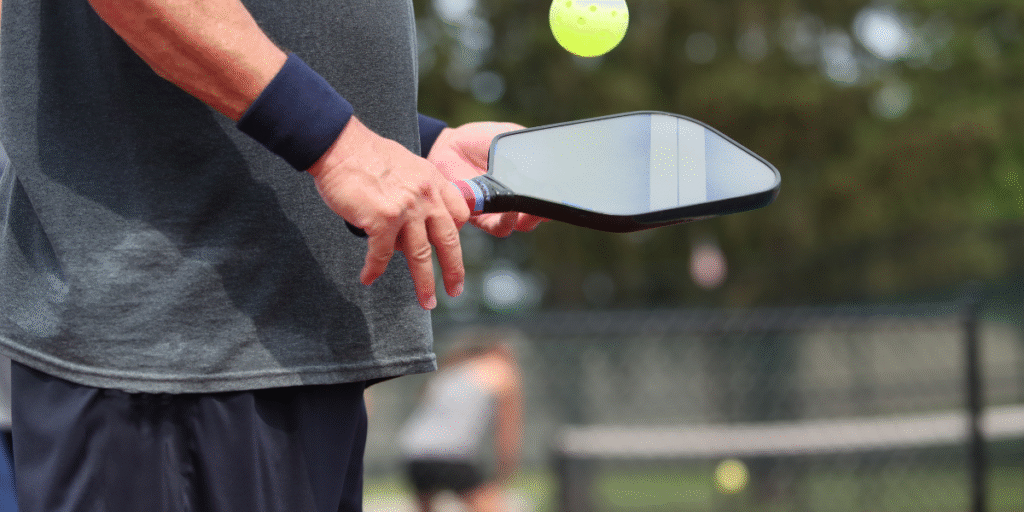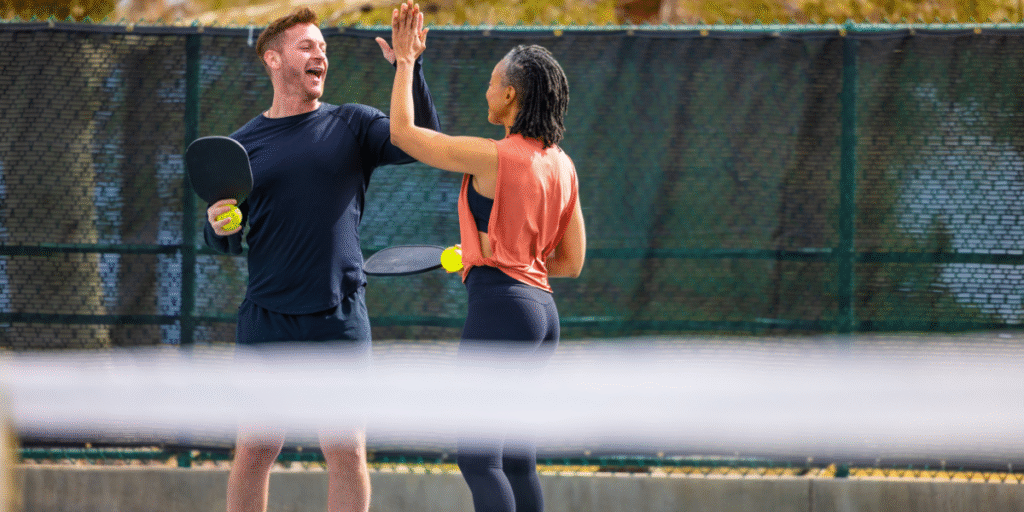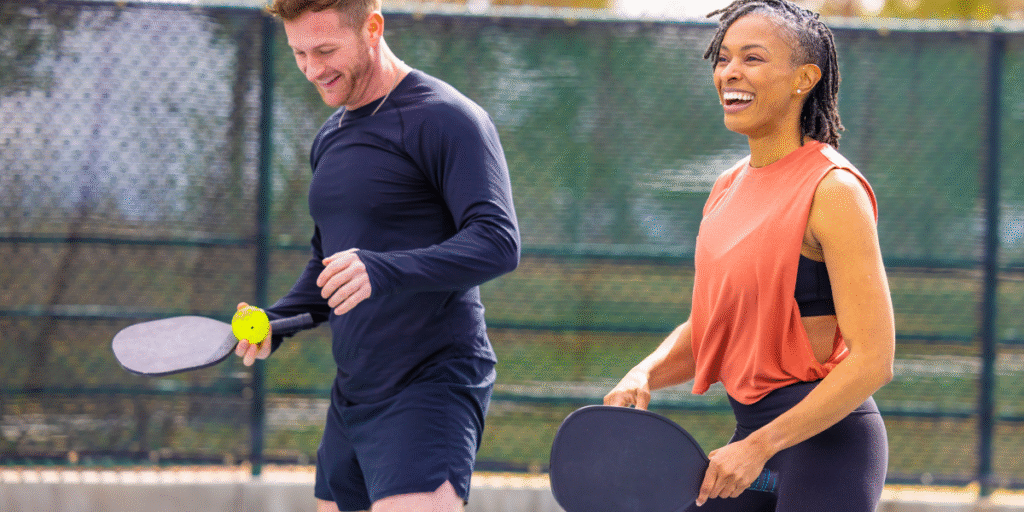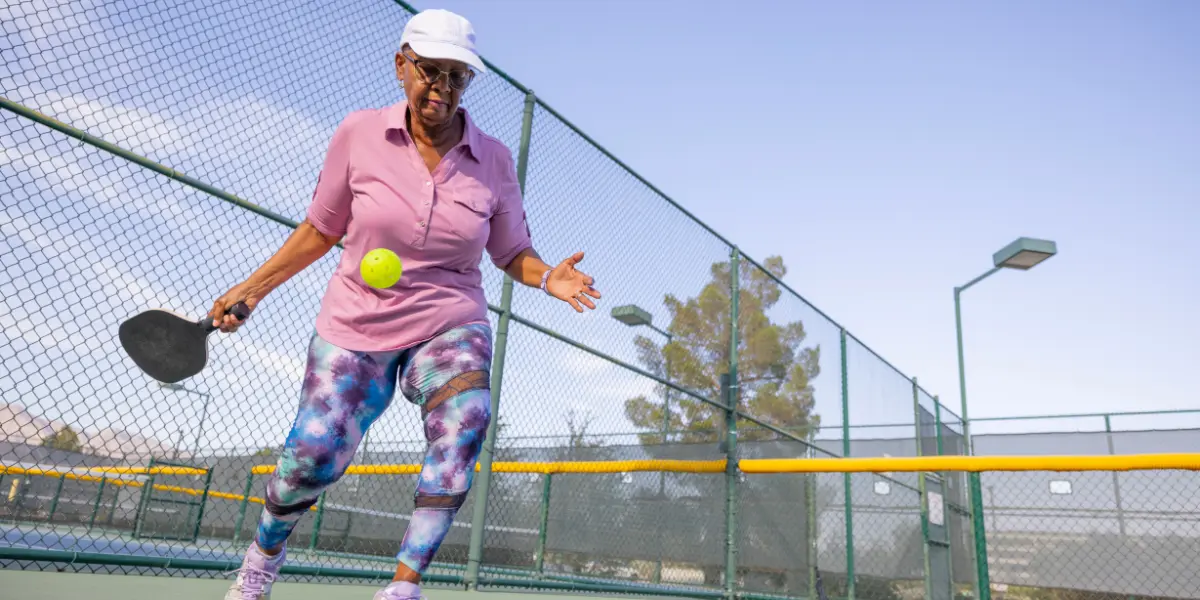If you’re struggling with service faults or just want more control in your pickleball game, the drop serve might be the solution you didn’t know you needed. Introduced as a rule update in recent years, the drop serve has quietly changed how players approach the game, especially beginners and those looking for consistency.
But what exactly is a drop serve, and why are experienced players using it strategically? In this article, we’ll break down everything you need to know about the drop serve, how to execute it properly, and why mastering it could give you an edge on the court.
What is a Drop Serve in Pickleball?
A drop serve in pickleball is a serving method where the player lets the ball fall from their hand or paddle face and strikes it only after it bounces. Unlike the traditional volley serve, where the ball is hit out of the air, the drop serve offers a more relaxed and controlled start to the rally.
The ball must fall naturally without any added force and can bounce any number of times before contact. This technique is especially helpful for players who struggle with precision or consistency in their serve.
By relying on gravity rather than timing a swing in midair, many players find that their drop serves land with better placement and fewer errors.
History and Rule of Drop Serve
The drop serve was officially introduced as a provisional rule in 2021 by USA Pickleball to expand serving options and improve accessibility for all players. Initially tested to see how it would affect gameplay, the rule gained quick support due to its simplicity and ease of use.

In 2022, the rule was retained permanently, giving players the choice between a traditional volley serve and a drop serve. This change aimed to level the playing field, especially for newer players or those with physical limitations.
The drop serve not only added flexibility to service strategies but also reduced the number of faults caused by strict paddle and ball position requirements in volley serving.
Drop Serve Rules According to USA Pickleball (Rule 4.A.6 a–c)
Understanding the official rules of the drop serve is essential if you want to use it correctly, especially in competitive play. Below is a breakdown of the current USA Pickleball rules as outlined in section 4.A.6 of the official rulebook.
4.A.6.a: Legal Ball Release and Visibility
- The ball must be released from only one hand or from the paddle face
- The release height must not exceed the natural reach of the server
- The ball must bounce at least once before it is struck
- There is no limit to how many times it can bounce or where it bounces
- The release must be visible to the receiver or referee
- If visibility is blocked or unclear, the serve must be replayed
- Traditional foot placement rules still apply under Rule 4.A.4
4.A.6.b: No Force or Assisted Motion Allowed
- The server cannot toss, throw, or push the ball downward
- The ball must drop entirely due to gravity
- No spin, lift, or downward force can be applied using the hand or paddle
4.A.6.c: Type of Stroke
- Both forehand and backhand strokes are permitted
- The player may choose either style as long as it follows the other drop serve requirements
Drop Serve vs Traditional Volley Serve in Pickleball
| Feature | Drop Serve | Traditional Volley Serve |
|---|---|---|
| Ball Contact | After the ball bounces on the ground | Hit out of the air before it touches the ground |
| Timing Difficulty | Easier, as you can time your swing after the bounce | Harder, requires precise timing during the toss |
| Control and Accuracy | High control due to slower, more stable setup | Less forgiving, can lead to faults if timing is off |
| Speed and Power | Generally slower, focused on placement | Can generate more power and spin |
| Ideal For | Beginners, players with mobility issues, or those needing consistency | Experienced players looking to apply pressure early in the rally |
| Foot Fault Risk | Lower, due to slower, deliberate motion | Higher, especially when rushing to hit the toss correctly |
| Legal Status | Fully legal and approved by USA Pickleball | Also fully legal under current rules |
| Ease of Learning | Easier to learn and master quickly | Takes more time and practice to execute correctly |
| Use in Competitive Play | Commonly used for safe and strategic serves | Preferred for aggressive or advanced-level serving strategies |
How to Perform a Drop Serve: Step-by-Step Guide
Get into Position
Begin by standing behind the baseline, making sure both feet are within the legal service area. At least one foot must stay grounded behind the baseline during the serve. Avoid stepping on or over the baseline, and make sure you do not extend into the sidelines or centerline. This setup is essential to avoid foot faults and maintain legality under official rules.
Hold the Ball or Paddle Face
You can hold the ball either in one hand or balance it on the face of your paddle. Choose whichever method feels more natural for you. At this stage, it’s critical not to apply any spin, push, or force to the ball. It must be in a neutral position, ready to drop straight down. This ensures compliance with the no-force rule defined in official drop serve regulations.

Let the Ball Drop Naturally
Let gravity do the work by simply releasing the ball from your hand or paddle. Do not toss it upward or throw it downward. The release should be passive and free of any additional motion. Once released, the ball can bounce once or multiple times before you strike it. There is no restriction on the number of bounces, but contact must always come after the bounce.
Make Contact with the Ball After the Bounce
After the ball has bounced, strike it using a smooth underhand motion. The paddle should be below your waistline at the moment of contact. You’re allowed to hit the ball using either a forehand or backhand swing, depending on your comfort and strategy. Timing is crucial here, as hitting too early or too late can disrupt your serve’s control and accuracy.
Aim and Serve with Control
Your serve should travel diagonally into the opponent’s service court, just like with a traditional serve. Focus on precision and depth rather than sheer power. A controlled drop serve can force your opponent into a weak return or give you the advantage early in the rally. Consistency in this step is what separates a beginner from a strategic player.
Advantages of Using the Drop Serve in Pickleball
The drop serve has become increasingly popular among both recreational and competitive players, and for good reason. Its simplicity and flexibility offer several practical advantages that make it an attractive option for improving overall serving performance.
One of the biggest advantages is improved consistency. Because the ball bounces before contact, players have more time to adjust their paddle and position, resulting in fewer faults and mis-hits. This extra moment helps reduce the pressure of a rushed serve, especially in high-stakes situations.

The drop serve also favors players with limited mobility or those recovering from injury. Since the motion is less demanding and doesn’t require perfect timing in the air, it allows more control without sacrificing legality. For older players or beginners, this creates a more accessible entry point into serving confidently.
Another benefit is the reduction in foot faults. The slower, more deliberate pace of the drop serve gives players better control over their stance and balance, helping them stay within legal boundaries during execution.
From a strategic point of view, the drop serve allows for better placement. Players can focus on aiming to the corners or exploiting their opponent’s weaknesses, rather than worrying about the perfect toss and swing.
Lastly, it provides versatility. Being able to switch between a traditional serve and a drop serve gives you a tactical edge, making your service game less predictable and more dynamic.
Common Mistakes to Avoid During a Drop Serve
1. Tossing the Ball Instead of Dropping It
- Applying any force, either tossing it upward or pushing it down, is not allowed.
- Only gravity should control the drop.
- This mistake often happens subconsciously, so players must stay aware of their motion.
2. Hitting the Ball Before It Bounces
- The ball must bounce once before being struck.
- Hitting it in mid-air, even by accident, results in a fault.
- Players used to traditional serves often rush and make this mistake.
3. Foot Fault Violations
- Stepping on or over the baseline is illegal.
- Extending your foot into the sideline or centerline also results in a fault.
- Both feet must not leave the ground during the serve.
- Even with the slower pace of a drop serve, proper foot placement is crucial.
4. Poor Timing and Swing Control
- Swinging too early or too late after the bounce affects accuracy.
- A smooth rhythm between the drop, bounce, and strike improves serve reliability.
- Consistent practice helps develop this coordination.
5. Blocking the Receiver’s View
- The ball must be dropped in clear view of the receiver or referee.
- If visibility is blocked, the serve will be replayed.
- Always drop the ball in front of your body to keep it visible.
How to Practice the Drop Serve Effectively
Practicing the drop serve consistently helps develop muscle memory, improve accuracy, and build confidence during real matches.
Warm-Up Drills
Begin each practice session by simply dropping the ball and watching how it bounces. Focus on achieving a consistent, natural bounce without any upward toss. This may seem basic, but it’s one of the most important habits to build early on.
When I started, I found myself unconsciously tossing the ball slightly, which made my serve illegal. Doing this warm-up every session fixed that.
Target Practice
Set up cones or use tape to mark zones in the service box. Practice aiming your serves at these targets. I usually start with deep serves near the baseline, then work on hitting angles closer to the sideline. Over time, this drill helped me understand how small adjustments in paddle angle and footwork impact serve direction and distance.

Varying Pace and Spin
Experiment with different paddle angles and swing speeds to learn how pace and spin affect your serve. Try hitting a slow serve with backspin, then follow it up with a faster, flatter shot. I’ve found that mixing up spin and speed forces my opponents into uncomfortable returns, especially when they’re expecting a consistent pace.
Repetition with Feedback
Record yourself or ask a partner to observe your technique. Look out for your grip, paddle motion, and whether your drop is legal. I used to think I had a good serve until I watched a video of myself I was tilting forward and dropping the ball slightly ahead of my body. Identifying and correcting this small flaw made a big difference.
Pressure Simulation
To simulate real-game pressure, practice serving after running short sprints or during mini mock matches. When your heart rate is up and fatigue sets in, it’s easy to lose form. Practicing in these conditions has helped me stay consistent when serving during long rallies or close scores.
Want solo practice tips? Check out our full guide on how to practice pickleball alone at home, packed with effective drills to boost your skills when you’re training solo.
FAQs
Yes, the drop serve is allowed in both recreational and professional play under current USA Pickleball rules. However, most professionals still prefer the traditional serve, primarily because they’ve trained with it longer. That said, many players at advanced levels are starting to use the drop serve for specific tactical reasons.
That depends on your playing style. The drop serve offers more consistency for beginners and allows creative spin variations, but the traditional serve may provide more power and control for experienced players.
No. The rules clearly state that the ball must be dropped from the hand without adding force, and it must fall from a natural height, typically waist level. Dropping it from shoulder height or higher could result in an illegal serve call, especially during competitive play.
Most coaches recommend beginners start with the drop serve. It removes the added complexity of timing a toss and swinging simultaneously, which often leads to faults. Once players become comfortable with paddle control and serve placement, they can try the traditional serve to expand their options.
Yes, you can use a drop serve in both doubles and tournament play. The drop serve is fully legal under USA Pickleball rules, and players at all levels including professionals use it strategically.
Conclusion
The drop serve in pickleball is a practical and accessible serving technique that offers players more freedom and consistency. It’s especially beneficial for those who prefer a simpler motion without compromising control or accuracy.
By learning the proper form and following the official pickleball drop serve rules, you can confidently use this serve in casual games, doubles, or even tournaments.
With regular practice and a little experimentation, the drop serve can become a reliable part of your strategy and help you elevate your overall performance on the court.

